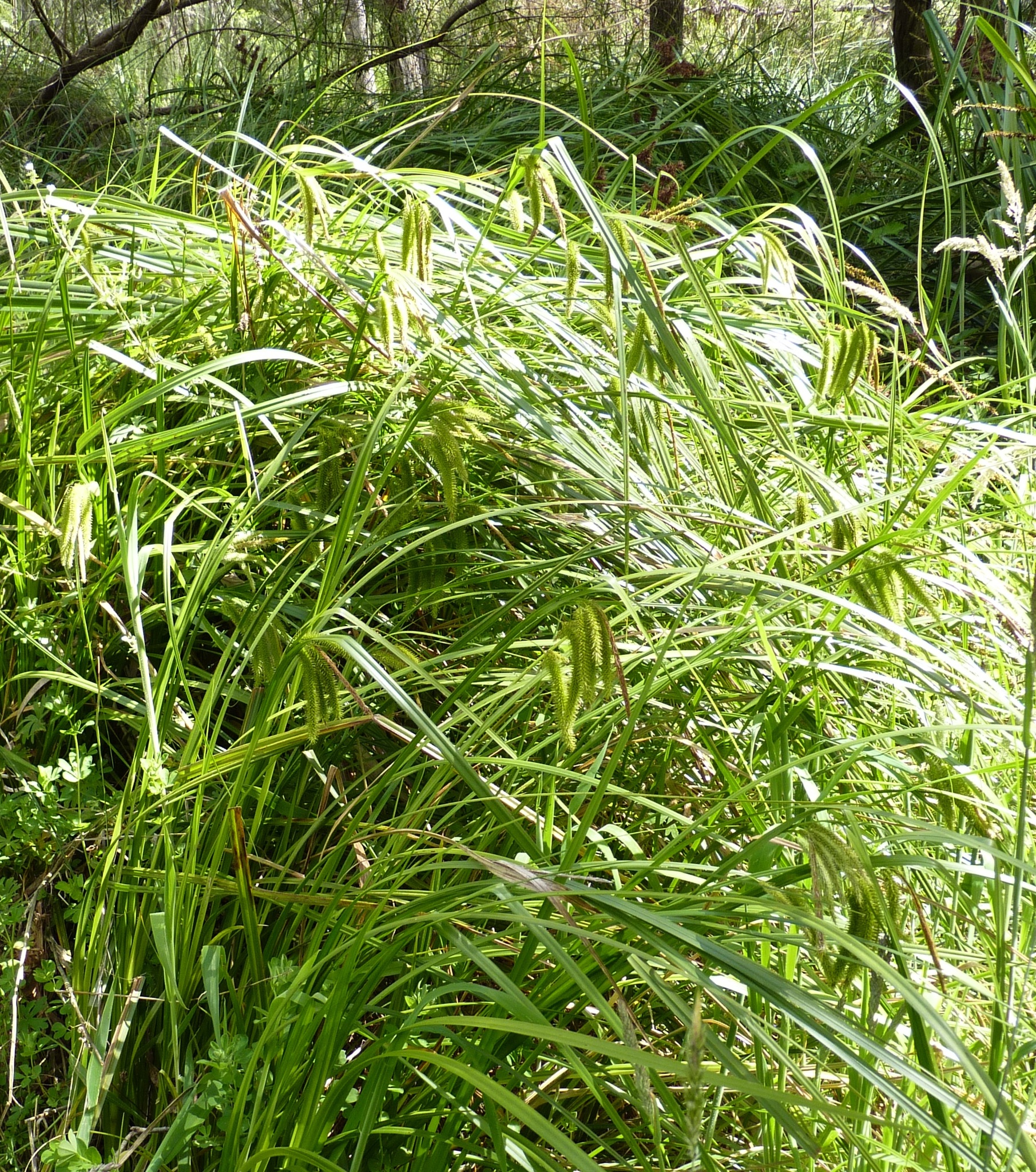
From the Latin carex – sedge.
Tufted or rhizomatous perennial herbs mostly of moist places. Stems mostly triangular in section, with solid internodes and with leaf sheaths or their remnants at the base. Leaves with ligules. Inflorescence panicle-, raceme-, or spike-like. Spikes male, female or bisexual. Spikelets unisexual. Stamens 3. Flower each with a chaffy bract. Ovary superior, 1-chambered containing 1 ovule. Fruit a 3-angled or lens-shaped nut enclosed in a thin case (utricle).
Grass-like plants that are grown for their often tassel-like flowers around ponds, along freeeways, or in revegetation schemes where they are habitat for wildlife. Several species with variegated foliage are offered including: C. brunnea 'Variegata', C. comans 'Frosted Curls', C. morrowii 'Variegata', C. elata 'Aurea' ['Bowles' Golden'], C. oshimensis 'Evergold'. The range of species offered changes from year to year. Only the more commonly grown species are described.
In Victoria naturalised species from Europe C. divulsa, Grey Sedge, and C. divisa show the tendency to become locally prolific as potentially devastating environmental and agricultural weeds, and in Tasmania C. albula, from New Zealand, with its characteristic near-white leaves, has become naturalised.
Division or seed.
Several species have medicinal uses, others are used for craft materials; sometimes used for erosion control. The foliage has similar fodder value to grass.
Fruits with a thin case which persists around the fruit; florets all unisexual; ligule present.
1500-2000 species, cosmopolitan but mostly Northern Hemisphere, nontropical and from wet habitats. Australia has about 60 species, about 20 of these being endemic and 19 species naturalised.
Source: (2005). Cyperaceae. In: . Horticultural Flora of South-eastern Australia. Volume 5. Flowering plants. Monocotyledons. The identification of garden and cultivated plants. University of New South Wales Press.
